Jean-Louis Basdevant0387377425, 9780387377421, 0387377441, 9780387377445
Table of contents :
Cover Page……Page 1
Litle Page……Page 3
ISBN 0387377425……Page 4
3 Wave function, Schrödinger equation……Page 6
5 Energy quantization……Page 7
6 Principles of quantum mechanics……Page 8
8 Algebra of observables……Page 9
10 The Hydrogen Atom……Page 10
12 The Pauli Principle……Page 11
14 Quantum mechanics in the Universe……Page 12
Index……Page 13
Preface……Page 14
1.1 The interplay of the eye and the mind……Page 16
1.2 Advanced technologies……Page 20
1.3.1 Mysteries of light……Page 21
1.3.2 Fundamental structure of matter……Page 23
1.4 The infinitely complex……Page 24
Materials……Page 25
1.5 The Universe……Page 27
2 A quantum phenomenon……Page 28
2.1.1 Interferences……Page 31
2.1.2 Wave behavior of matter……Page 32
2.1.3 Analysis of the phenomenon……Page 33
2.2.2 A nonclassical probabilistic phenomenon……Page 35
2.3 Conclusions……Page 36
2.4 Phenomenological description……Page 38
3.1.1 Terminology……Page 40
3.1.2 Methodology……Page 41
3.2.2 Wave function……Page 42
3.2.3 Schr¨odinger equation……Page 44
3.3 Superposition principle……Page 45
3.4.1 Free wave packets……Page 46
3.4.2 Fourier transformation……Page 47
3.5 Historical landmarks……Page 48
3.6.1 Free particle……Page 50
3.7 Heisenberg uncertainty relations……Page 51
3.7.1 Size and energy of a quantum system……Page 52
3.7.2 Stability of matter……Page 53
3.8.1 The 1927 Solvay Congress……Page 55
3.8.3 Hidden variables, Bell’s inequalities……Page 56
3.8.4 The experimental test……Page 57
4 Physical quantities……Page 60
4.1.1 Physical quantities……Page 61
4.1.2 Position and momentum……Page 62
4.2 Observables……Page 63
4.2.2 Momentum observable……Page 64
4.2.4 Historical landmarks……Page 65
4.3 A counterexample of Einstein and its consequences……Page 66
4.3.1 What do we know after a measurement?……Page 68
4.3.2 Eigenstates and eigenvalues of an observable……Page 69
4.3.3 Wave packet reduction……Page 70
4.4.1 The Hamiltonian……Page 71
4.4.2 The Schrödinger equation, time and energy……Page 72
4.4.3 Stationary states……Page 73
4.4.4 Motion: Interference of stationary states……Page 74
4.5.1 The dreadful idea……Page 75
4.5.2 The classical world……Page 78
5.1 Methodology……Page 80
5.1.1 Bound states and scattering states……Page 81
Eigenvalues, eigenfunctions……Page 82
5.2.2 Energy levels, eigenfunctions……Page 83
5.3.1 Square potentials……Page 84
5.3.2 Symmetric square well……Page 85
5.3.3 Infinite well, particle in a box……Page 88
5.4.1 The model……Page 89
5.4.2 Stationary states, the tunnel effect……Page 90
5.4.3 Energy levels……Page 91
5.4.4 Wave functions……Page 93
5.4.5 Inversion of the molecule……Page 94
5.5.1 Sensitivity to the parameters……Page 96
Valence electrons……Page 97
Potential barriers……Page 98
5.6.1 Nanotechnologies……Page 99
5.6.2 Classical limit……Page 100
6 Principles of quantum mechanics……Page 102
6.1 Hilbert space……Page 103
6.1.2 Square integrable functions……Page 104
Vectors……Page 107
6.2.2 Operators……Page 108
6.2.4 Projectors; decomposition of the identity……Page 110
6.3.1 Eigenvectors and eigenvalues of an observable……Page 111
6.3.2 Results of the measurement of a physical quantity……Page 112
6.3.4 The Riesz spectral theorem……Page 113
6.3.5 Physical meaning of various representations……Page 115
6.4.1 The principles……Page 116
6.4.3 Interest of this synthetic formulation……Page 117
6.5.1 Matrix representation of operators……Page 118
6.5.3 Heisenberg’s thoughts……Page 119
6.6 The polarization of light, quantum “logic”……Page 122
Quantum “logic”……Page 125
7.1 The NH3 molecule……Page 128
7.2 “Two-state” system……Page 129
7.3.1 Vectors……Page 131
7.3.3 Observables……Page 132
Position observable……Page 133
7.3.5 Basis of classical configurations……Page 134
7.4 NH3 in an electric field……Page 135
7.4.1 Uniform constant field……Page 136
Weak field……Page 137
7.5 The ammonia molecule in an inhomogeneous field……Page 138
7.5.1 Force on the molecule in an inhomogeneous field……Page 139
7.6 Reaction to an oscillating field, the maser……Page 141
7.7 Principle and applications of the maser……Page 143
7.7.1 Amplifiers……Page 144
7.7.3 Atomic clocks……Page 145
7.7.4 Tests of relativity……Page 147
7.8.1 Lepton families……Page 149
7.8.2 Mechanism of the oscillations; reactor neutrinos……Page 150
Results……Page 152
7.8.3 Successive hermaphroditism of neutrinos……Page 153
8.1.1 Fundamental commutation relation……Page 158
8.1.2 Other commutation relations……Page 159
8.1.3 Dirac in the summer of 1925……Page 160
8.2 Uncertainty relations……Page 161
8.3.1 Evolution of an expectation value……Page 162
8.3.2 Particle in a potential, classical limit……Page 163
8.3.3 Conservation laws……Page 164
8.4 Algebraic resolution of the harmonic oscillator……Page 165
8.4.2 Determination of the eigenvalues……Page 166
Ground state……Page 167
Excited states……Page 168
8.5.1 Theorem……Page 169
8.5.3 Tensor structure of quantum mechanics……Page 170
8.5.4 Complete set of commuting observables (CSCO)……Page 171
8.5.5 Completely prepared quantum state……Page 172
8.6 Sunday, September 20, 1925……Page 173
9 Angular momentum……Page 176
9.1.2 Definition of an angular momentum observable……Page 177
9.2.1 Statement of the problem……Page 178
9.2.2 Vectors |j,m> and eigenvalues j and m……Page 179
9.2.3 Operators Ĵ± =Ĵx ± iĴy……Page 180
9.2.4 Quantization……Page 181
Construction of the states |j,m>……Page 182
9.3.2 Integer values of m and l……Page 183
Examples of spherical harmonics……Page 184
9.4 Rotation energy of a diatomic molecule……Page 185
9.4.1 Diatomic molecule……Page 186
9.4.2 The CO molecule……Page 187
9.5.1 Classical model……Page 188
Orbital angular momenta……Page 190
9.5.4 Larmor precession……Page 191
9.5.5 What about half-integer values of j and m?……Page 192
10 The Hydrogen Atom……Page 194
10.1 Two-body problem; relative motion……Page 195
Separation of the angular variables……Page 197
10.2.3 Quantum numbers……Page 198
The principal quantum number n……Page 199
Spectroscopic notation (states s, p, d, f, …)……Page 200
10.3.1 Atomic units; fine structure constant……Page 201
Fine structure constant……Page 202
10.3.2 The dimensionless radial equation……Page 203
At infinity……Page 205
The ground state (1s)……Page 206
Other states……Page 207
10.3.5 Dimensions and orders of magnitude……Page 208
Spectroscopy……Page 209
10.4 Muonic atoms……Page 210
11.1 Experimental results……Page 214
11.2 Spin 1/2 formalism……Page 215
11.2.2 Matrix representation……Page 216
11.3 Complete description of a spin 1/2 particle……Page 217
11.3.1 Observables……Page 218
11.4 Physical spin effects……Page 219
11.5.1 Hamiltonian of a one-electron atom……Page 220
11.6.1 Principle of the experiment……Page 221
11.6.2 Semi-classical analysis……Page 222
11.6.4 Explanation of the Stern–Gerlach experiment……Page 223
11.6.6 Measurement along an arbitrary axis……Page 226
11.7.1 The hidden sides of the Stern–Gerlach experiment……Page 228
11.7.2 Einstein and Ehrenfest’s objections……Page 230
11.7.3 Anomalous Zeeman effect……Page 231
11.7.5 The spin hypothesis……Page 232
11.7.6 The fine structure of atomic lines……Page 233
11.8 Magnetism, magnetic resonance……Page 234
Uncorrelated space and spin variables……Page 235
Superposition of a fixed field and a rotating field……Page 236
Rabi’s experiment……Page 238
11.8.4 Nuclear magnetic resonance……Page 240
11.8.5 Magnetic moments of elementary particles……Page 242
11.9 Entertainment: Rotation by 2π of a spin 1/2……Page 243
12 The Pauli Principle……Page 244
12.1.2 The quantum problem……Page 245
12.1.3 Example of ambiguities……Page 246
12.2.2 Hilbert space of spin variables……Page 247
12.2.4 Total spin states……Page 248
12.3.1 The Hilbert space for the two-particle system……Page 250
Examples……Page 251
12.3.3 Symmetry of the states……Page 252
Examples……Page 253
12.4.3 The case of N identical particles……Page 254
The case of fermions……Page 255
12.5.2 The ground state of N identical independent particles……Page 256
12.5.3 Behavior of fermion and boson systems at identical independent particles……Page 258
13.1 The EPR paradox……Page 262
13.2 The version of David Bohm……Page 264
13.2.1 Bell’s inequality……Page 266
13.2.2 Experimental tests……Page 269
13.3.1 The communication between Alice and Bob……Page 271
13.3.2 Present experimental setups……Page 273
13.4.1 Bell states……Page 275
13.4.2 Teleportation……Page 276
Further reading……Page 277
14 Quantum mechanics in the Universe……Page 278
14.1.1 Life and death of stars……Page 280
14.2 Radioastronomy, the interstellar medium……Page 283
14.2.1 The interstellar medium……Page 284
14.3 Cosmic background radiation: Birth of the Universe……Page 288
14.4 The 21-cm line of hydrogen……Page 290
14.4.1 Hyperfine structure of hydrogen……Page 291
14.4.2 Hydrogen maser……Page 293
14.4.3 Importance of the 21-cm line……Page 294
14.5 The Milky Way……Page 295
14.6 The intergalactic medium; star wars……Page 296
14.6.1 Spiral arms, birthplaces of stars……Page 300
14.7.1 Rotation spectra of molecules……Page 302
14.7.2 Interstellar molecules……Page 303
14.7.3 The origin of life……Page 304
14.8.1 Life, intelligence, and thought……Page 306
14.8.2 Listening to extraterrestrials……Page 308
14.8.3 Quantum mechanics, the universal cosmic language……Page 310
Index……Page 318
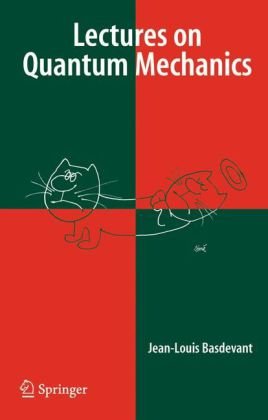
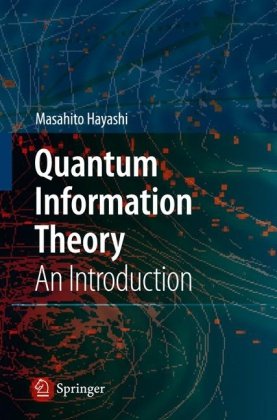


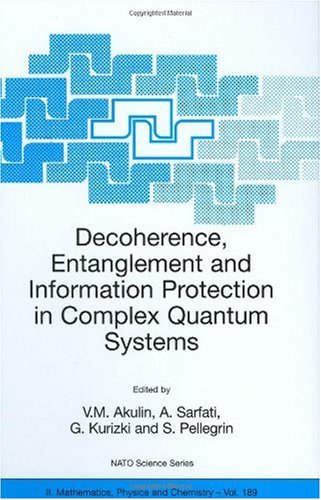
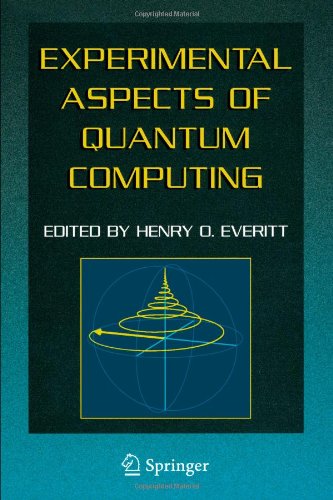
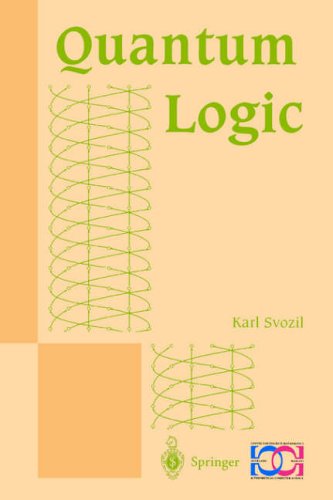
Reviews
There are no reviews yet.